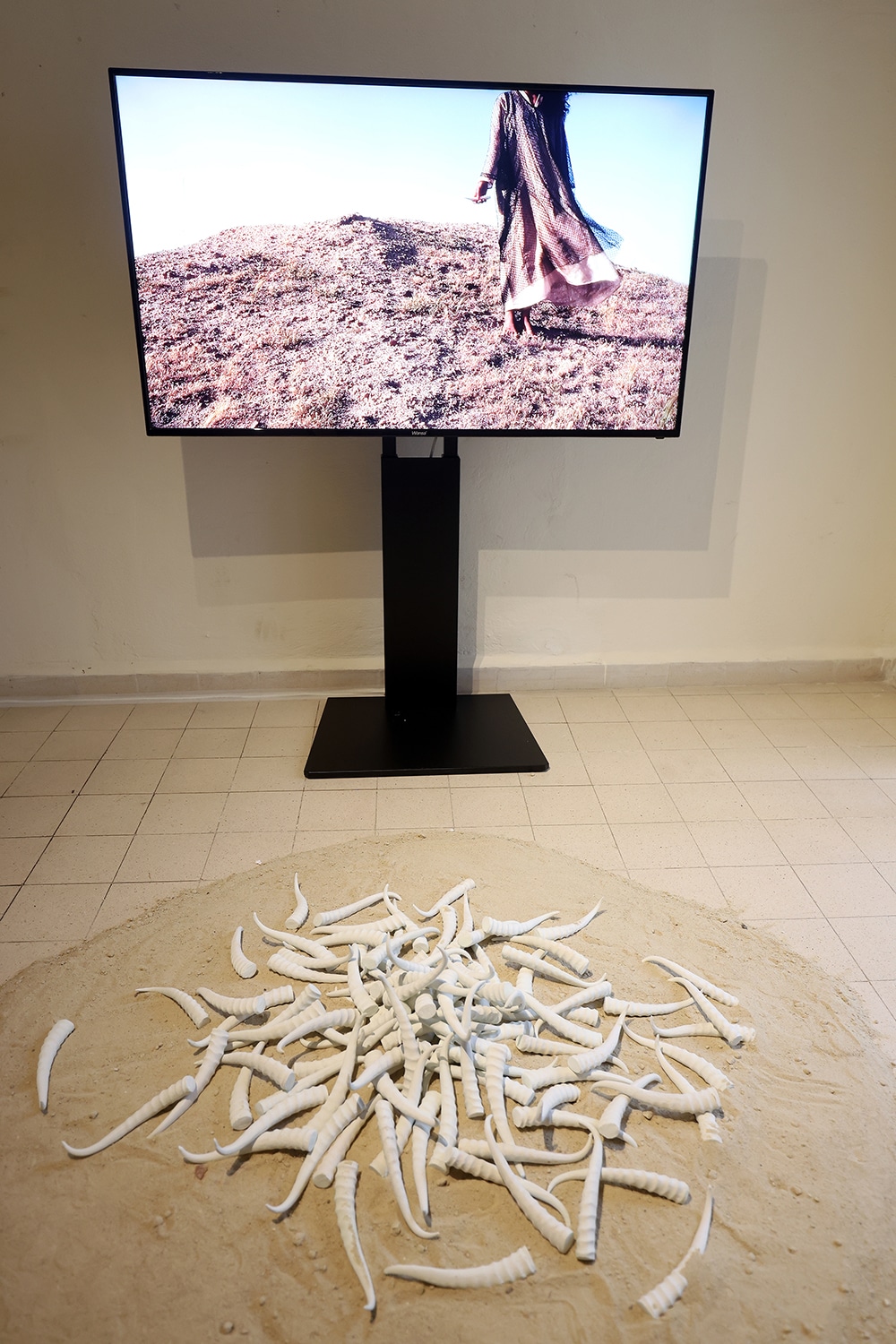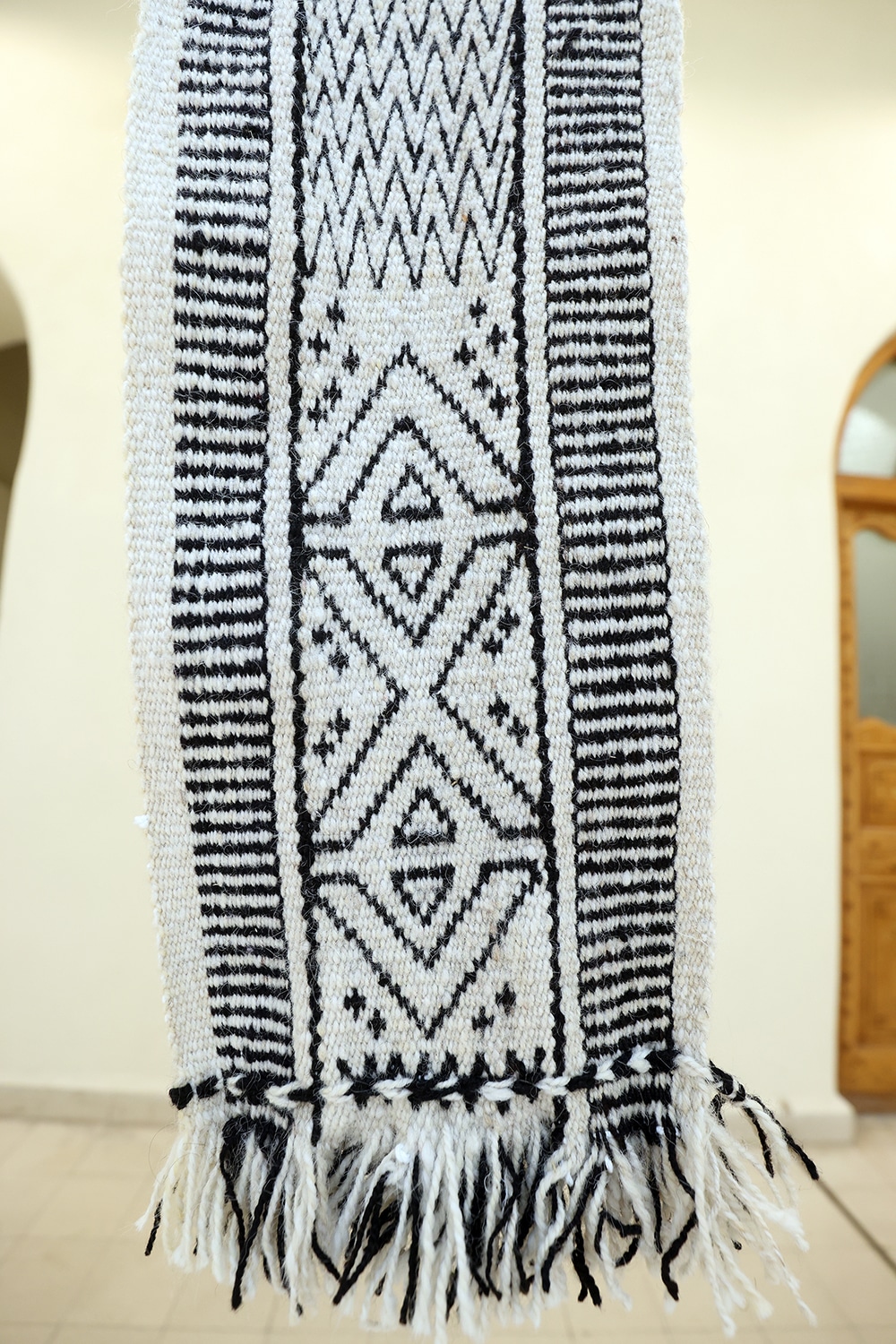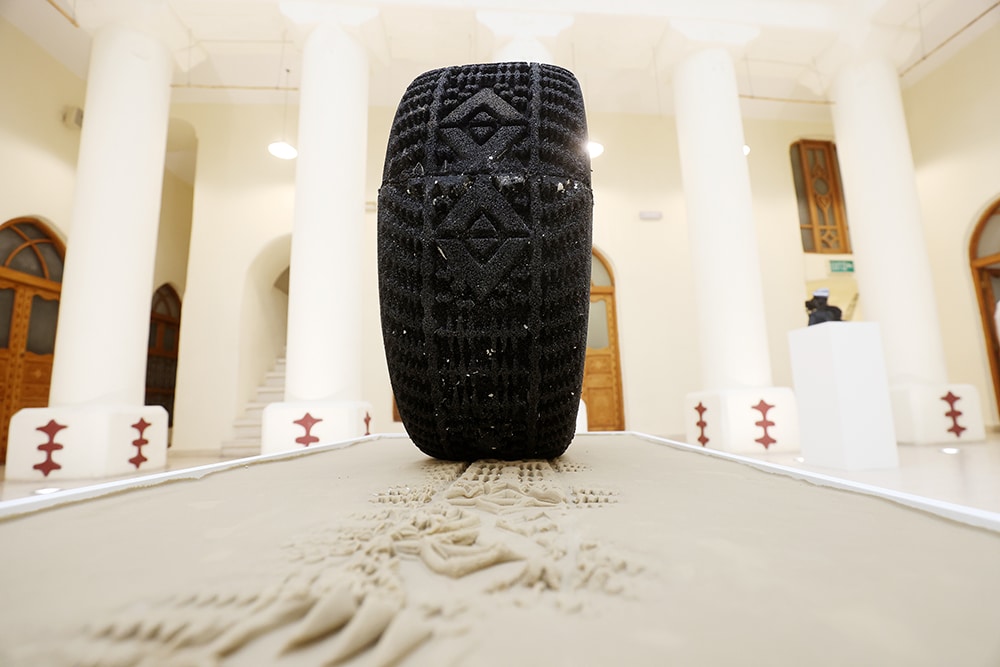By Ghadeer Ghloum
KUWAIT: Kuwaiti designer Hanadi Al-Marzouq is showcasing her artwork in “Traces of Nostalgia”, a multidisciplinary exhibition where she expresses the changes that took place in Kuwait after the discovery of oil.
Marzouq’s art pieces revolve around preserving Kuwait’s heritage that is fading away after the country’s rapid modernization. Five of her artworks that shift between Kuwait’s past and present are displayed at the exhibition: The Trace, The Prophecy, The Awakening, Inception and Anthropocene. The exhibition opened at Sadu House on April 29, 2023 and will continue until May 6, 2023. During the exhibition, Marzouq told Kuwait Times about her artworks and highlighted the significance of each pieces.
 Kuwaiti designer Hanadi Al-Marzouq poses for a photo outside the exhibit held at Sadu House.
Kuwaiti designer Hanadi Al-Marzouq poses for a photo outside the exhibit held at Sadu House.The Trace, 2023: Mixed media installation
Marzouq said ‘The Trace’ is an installation that deconstructs the language of traditional symbols found in Sadu textiles, embracing them as functional motifs rather than mere ornaments that are devoid of any purpose. The central part of this installation is a tire, a symbol of the consumerist mindset, manufactured from recycled rubber whose tracks reveal ephemeral Sadu impressions on the sand. This installation invites the viewer to reflect on our lost heritage, capturing fleeting moments before they disappear from our landscape.
 The Prophecy, 2023: Mixed media sculpture
The Prophecy, 2023: Mixed media sculpture
Describing ‘The Prophecy’, Marzouq said it is a composition of thoughts on Kuwait’s brutalist architecture of the oil era, which is mostly demolished now as oil continues to be a catalyst for cycles of demolition and construction that are devoid of any permanence. This multi-layered abstraction fuses various materials such as ceramic and brass. This leads to the realization that the purpose of this study is not to recover what has been lost, but to expand on the potential of contemporary identities of Kuwaitis influenced by this dichotomous transition.
The Awakening, 2023: Mixed media installation
Extending her thoughts to a future that gives birth to other habitants, Marzouq said ‘The Awakening’ is an installation that transports the viewer into the future, with a glimpse of ruins at an imagined site where future habitants reflect on our legacy and pose questions to construct a collective memory of our past. The bleached burqas represent the diminished interest in locally crafted goods and the decline of the weaver’s historic role in society, whereas the prototypes of an unfinished project represent a constant state of cultural alienation. The installation also comments on the shift in gender roles that came about during this period of social and economic change, allowing the manifestation of petro-masculinity in many ways.


Inception, 2023: Textile, wool
Marzouq said the textile pattern mimics tire tracks found in the previous installation, a contrast of the past and present. While the weaver promotes cultural identity through their craft, the designer draws significance from culture using instruments that can channel this meaning into products. The result is a juxtaposition of the roles of the traditional weaver and the contemporary product designer as they collaborate to create products that generate social shifts.
Anthropocene, 2023: Film
Marzouq clarified the idea of the film, as she said that in a barren postapocalyptic landscape, an unnamed young bedouin woman — a relic of her bygone ancestry — attempts to summon a half remembered Sadu-weaving technique. She wanders through decayed cityscapes, desertscapes and abandoned scrap yards in search of the one tool that would activate her memory and regenerate her once expert weaving skills - a weaving horn. The work explores spatial and temporal insights into the inevitable consequences of the current state of imbalance. By breaking the barrier between the screen and the spectator with a pile of horns, the narrative is extended to become a perceptual activity of the spectator.











